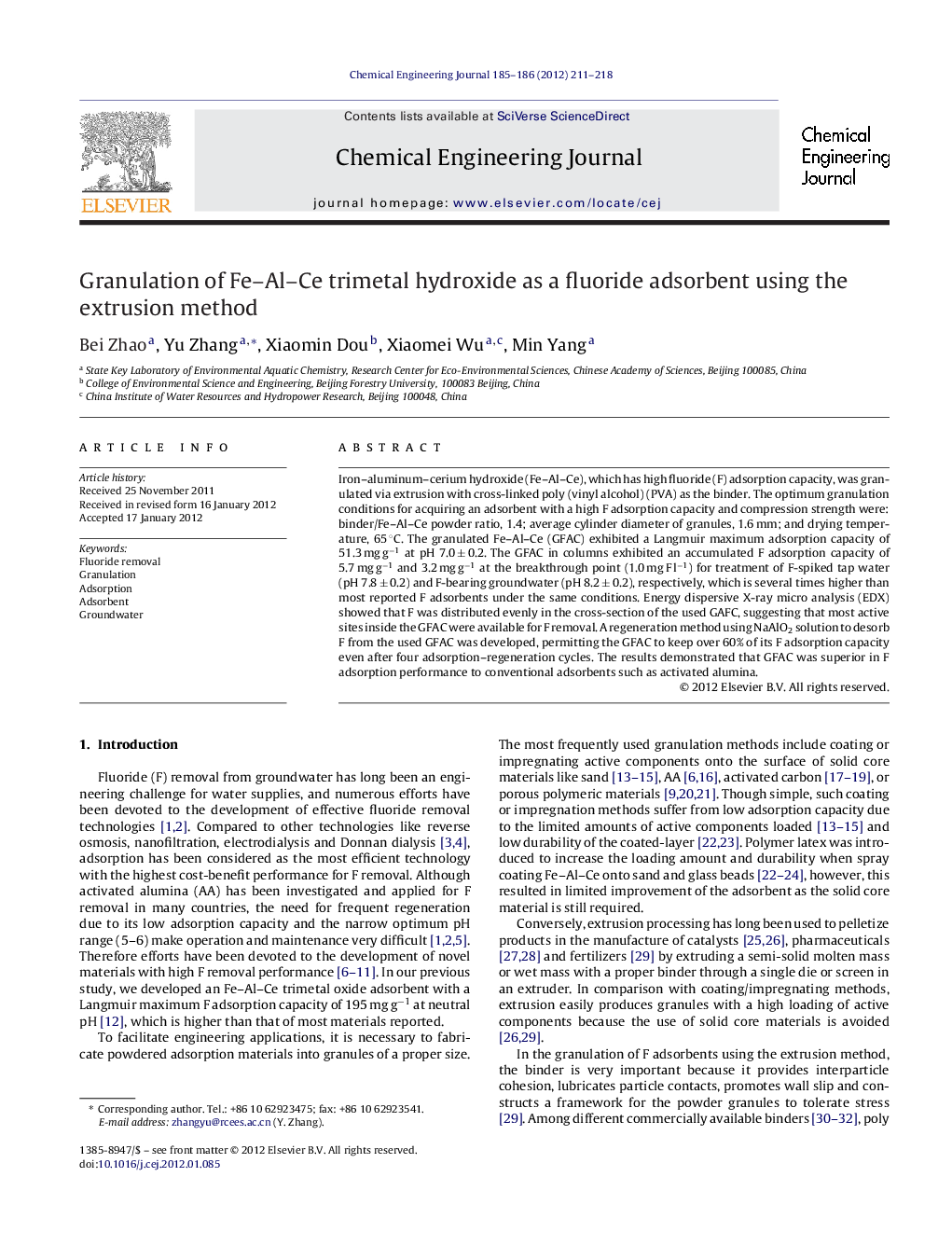| Article ID | Journal | Published Year | Pages | File Type |
|---|---|---|---|---|
| 150152 | Chemical Engineering Journal | 2012 | 8 Pages |
Iron–aluminum–cerium hydroxide (Fe–Al–Ce), which has high fluoride (F) adsorption capacity, was granulated via extrusion with cross-linked poly (vinyl alcohol) (PVA) as the binder. The optimum granulation conditions for acquiring an adsorbent with a high F adsorption capacity and compression strength were: binder/Fe–Al–Ce powder ratio, 1.4; average cylinder diameter of granules, 1.6 mm; and drying temperature, 65 °C. The granulated Fe–Al–Ce (GFAC) exhibited a Langmuir maximum adsorption capacity of 51.3 mg g−1 at pH 7.0 ± 0.2. The GFAC in columns exhibited an accumulated F adsorption capacity of 5.7 mg g−1 and 3.2 mg g−1 at the breakthrough point (1.0 mg F l−1) for treatment of F-spiked tap water (pH 7.8 ± 0.2) and F-bearing groundwater (pH 8.2 ± 0.2), respectively, which is several times higher than most reported F adsorbents under the same conditions. Energy dispersive X-ray micro analysis (EDX) showed that F was distributed evenly in the cross-section of the used GAFC, suggesting that most active sites inside the GFAC were available for F removal. A regeneration method using NaAlO2 solution to desorb F from the used GFAC was developed, permitting the GFAC to keep over 60% of its F adsorption capacity even after four adsorption–regeneration cycles. The results demonstrated that GFAC was superior in F adsorption performance to conventional adsorbents such as activated alumina.
► A granular Fe–Al–Ce adsorbent (GFAC) was fabricated using the extrusion method. ► The GFAC exhibited higher adsorption capacity than activated alumina at neural pH. ► Most active sites inside the GFAC were available for F removal. ► The F-loaded GFAC was successfully regenerated by NaAlO2.
